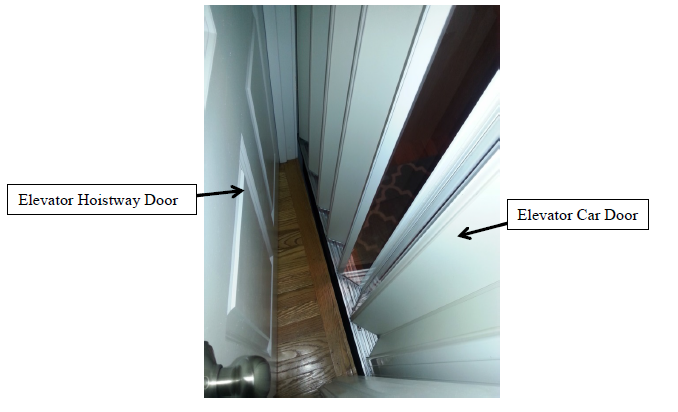Washington, D.C. – The U.S. Consumer Product Safety Commission (CPSC) is warning consumers with home elevators and visitors to homes with elevators to protect small children from being crushed to death in a deadly gap that may exist between the doors. The distance between the inner elevator car door or gate and the exterior (i.e., hoistway) elevator access door may be too deep to protect small children. If the gap is too deep between any exterior (i.e., hoistway) door and the farthest point of the inner door (which is often an accordion door) a child can enter and close the exterior (i.e., hoistway) door without opening the interior car door, and become entrapped between the two doors, resulting in serious injuries or death when the elevator car moves. Children, some as young as two and as old as 12, have been crushed to death in this gap, suffering multiple skull fractures, fractured vertebrae and traumatic asphyxia. Other children have suffered horrific and lifelong injuries.
Residential elevators are commonly found in multi-level homes, townhomes, vacation homes and rentals, and in large homes that have been converted to inns or bed-and-breakfast hotels.
If you have an elevator in your home or in your vacation rental, make sure that the gap between doors is no more than four inches deep. If you are uncertain of the measurement or are otherwise concerned about the safety of the elevator, lock the elevator itself in an unusable position, or lock all access doors to the elevator. CPSC urges consumers to have a qualified elevator inspector examine their home elevator for this dangerous gap and other potential safety hazards, inspecting to the latest ASME A17.1, Safety Code for Elevators and Escalators. Dangerous gaps can be made safer by placing space guards on the back of the exterior (i.e., hoistway) door or installing an electronic monitoring device that deactivates the elevator when a child is detected in the gap. CPSC also urges consumers to contact their elevator manufacturer or an elevator installer to obtain these critical safety devices to address this hidden hazard. Elevator installers should never allow any gap greater than four inches deep to exist in an elevator entryway.
CPSC will continue its investigation into the safety of residential elevators, and advises consumers to report any safety incident involving residential elevators at: www.SaferProducts.gov.
About the U.S. CPSC
The U.S. Consumer Product Safety Commission (CPSC) is charged with protecting the public from unreasonable risk of injury associated with the use of thousands of types of consumer products. Deaths, injuries, and property damage from consumer product-related incidents cost the nation more than $1 trillion annually. Since the CPSC was established more than 50 years ago, it has worked to ensure the safety of consumer products, which has contributed to a decline in injuries associated with these products.
Federal law prohibits any person from selling products subject to a Commission ordered recall or a voluntary recall undertaken in consultation with the CPSC.
For lifesaving information:
- Visit CPSC.gov.
- Sign up to receive our email alerts.
- Follow us on Facebook, Instagram, X, BlueSky, Threads, LinkedIn and Truth Social.
- Report a dangerous product or a product-related injury on www.SaferProducts.gov.
- Call CPSC’s Hotline at 800-638-2772 (TTY 800-638-8270).
- Contact a media specialist.
Please use the below phone number for all media requests.
Phone: (301) 504-7908
Spanish: (301) 504-7800



